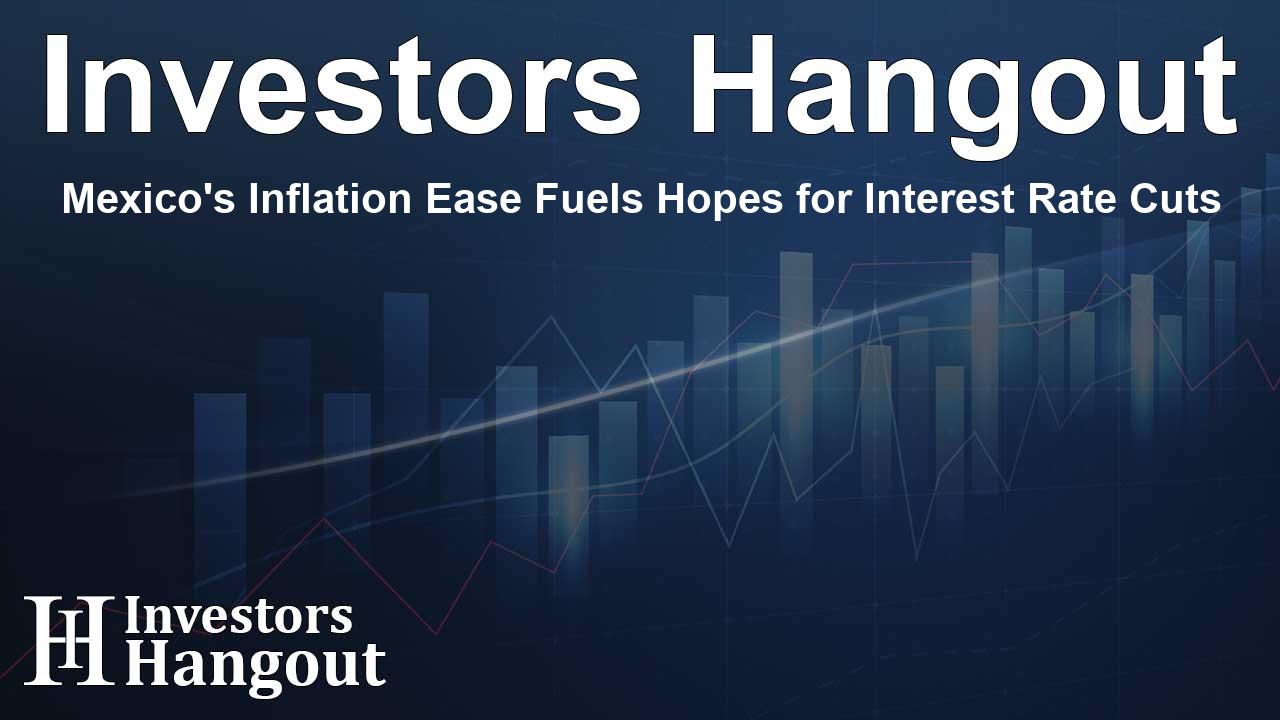Mexico's Inflation Ease Fuels Hopes for Interest Rate Cuts

Mexico's Inflation Reduction Signals Potential Rate Cuts
In a recent announcement from Mexico's statistics agency INEGI, it was revealed that inflation has decreased more than anticipated. This positive development, coupled with stronger-than-expected economic growth, paves the way for the Bank of Mexico, known as Banxico, to consider additional cuts to interest rates in the near future.
Recent Monetary Policy Adjustments
Just last week, Banxico made a significant decision to lower its key interest rate by 25 basis points, bringing it down to 10.25%. This marks the third consecutive reduction by the central bank's governing board, signaling a trending easing of monetary policy in response to changing economic conditions.
Understanding Inflationary Trends
According to reports, inflation in Mexico has reached 4.56% as of early November. This figure shows a drop from the previous month's 4.69%, which came as a surprise to many economists who had predicted stable inflation rates. Notably, while this number is an improvement, it still exceeds Banxico's target of 3%, plus or minus 1 percentage point.
The core consumer price index, which is a reliable measure of ongoing price changes because it excludes volatile items like fresh food and energy, recorded a significantly lower annual rate of 3.58%. This dip represents a crucial indicator of easing inflationary pressures within the Mexican economy.
The Implications of Core Inflation
Experts like Kimberley Sperrfechter of Capital Economics observed that the drop in core inflation, particularly in the services sector, signals potential for continued monetary easing. With services inflation falling below 5% for the first time in two years, there is optimism surrounding Banxico's potential strategies moving forward. Alberto Ramos, an economist at Goldman Sachs, echoed these sentiments by indicating that core goods inflation remains manageable, suggesting there would not be significant inflationary pressure stemming from currency fluctuations.
Mexico's Economic Performance Amidst Challenges
Aside from inflation trends, Mexico's economy demonstrated resilience, expanding by 1.1% in the third quarter. This growth not only surpassed economists’ predictions of 1.0% but was largely attributed to a strong performance in the primary sector, which encompasses agriculture, fishing, and mining activities. However, marking an annual growth rate of 1.6%, this was slightly below the previous quarter's performance of 2.2%.
Despite these encouraging statistics, challenges such as post-election policy uncertainties and a significant depreciation of the Mexican peso, which has lost around 19% of its value since the recent elections, paint a more complex picture of the country’s economic landscape.
Future Outlook and Investor Confidence
Looking ahead, financial experts like Ramos caution that business activity may face headwinds due to a combination of factors, including weakened fiscal policies and diminished business confidence along with moderate external demand. The aftermath of recent electoral reforms has raised concerns about the stability of Mexico’s legal framework, further complicating investor perspectives. Additionally, uncertainties surrounding the future of the U.S. trade relationship post-election add to the mix, highlighting the importance of a stable political environment to foster economic growth.
Frequently Asked Questions
What recent data has influenced Mexico’s monetary policy decisions?
Recent data indicating a decrease in inflation and stronger economic growth has influenced Banxico's decision to consider cutting interest rates further.
What is the current key interest rate set by Banxico?
The current key interest rate set by Banxico is 10.25%, following a series of recent cuts.
How has inflation changed in Mexico recently?
Inflation has decreased to 4.56%, down from 4.69% the previous month, despite still being above the target rate.
What sectors are contributing to Mexico’s economic growth?
The primary sector, including agriculture, fishing, and mining, has been a significant contributor to Mexico's economic growth.
What challenges does Mexico face in the near future?
Mexico faces challenges such as policy uncertainties, currency depreciation, and concerns over U.S. trade relationships that could impact future growth.
About Investors Hangout
Investors Hangout is a leading online stock forum for financial discussion and learning, offering a wide range of free tools and resources. It draws in traders of all levels, who exchange market knowledge, investigate trading tactics, and keep an eye on industry developments in real time. Featuring financial articles, stock message boards, quotes, charts, company profiles, and live news updates. Through cooperative learning and a wealth of informational resources, it helps users from novices creating their first portfolios to experts honing their techniques. Join Investors Hangout today: https://investorshangout.com/
Disclaimer: The content of this article is solely for general informational purposes only; it does not represent legal, financial, or investment advice. Investors Hangout does not offer financial advice; the author is not a licensed financial advisor. Consult a qualified advisor before making any financial or investment decisions based on this article. The author's interpretation of publicly available data shapes the opinions presented here; as a result, they should not be taken as advice to purchase, sell, or hold any securities mentioned or any other investments. The author does not guarantee the accuracy, completeness, or timeliness of any material, providing it "as is." Information and market conditions may change; past performance is not indicative of future outcomes. If any of the material offered here is inaccurate, please contact us for corrections.